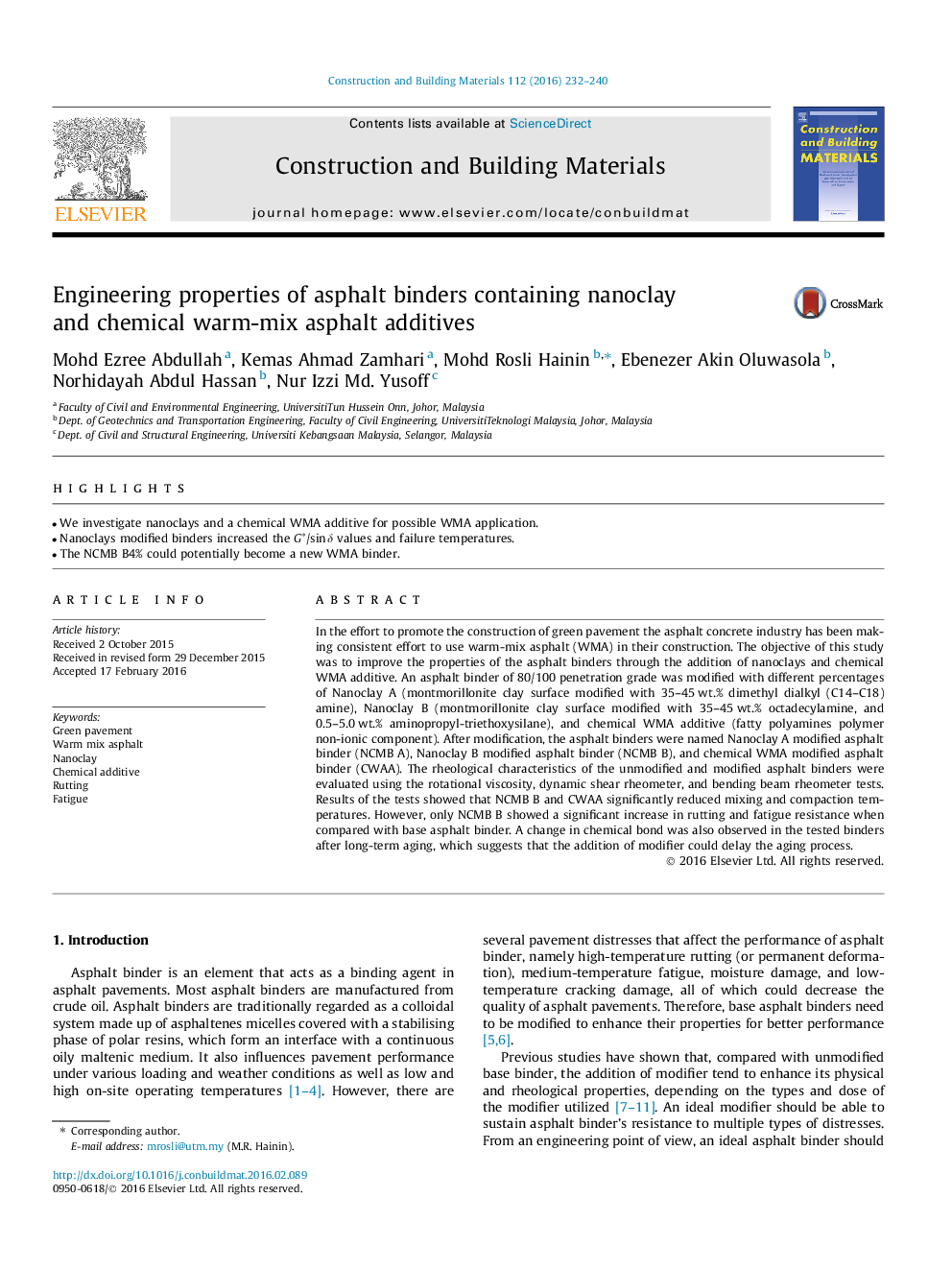| Article ID | Journal | Published Year | Pages | File Type |
|---|---|---|---|---|
| 6719073 | Construction and Building Materials | 2016 | 9 Pages |
Abstract
In the effort to promote the construction of green pavement the asphalt concrete industry has been making consistent effort to use warm-mix asphalt (WMA) in their construction. The objective of this study was to improve the properties of the asphalt binders through the addition of nanoclays and chemical WMA additive. An asphalt binder of 80/100 penetration grade was modified with different percentages of Nanoclay A (montmorillonite clay surface modified with 35-45Â wt.% dimethyl dialkyl (C14-C18) amine), Nanoclay B (montmorillonite clay surface modified with 35-45Â wt.% octadecylamine, and 0.5-5.0Â wt.% aminopropyl-triethoxysilane), and chemical WMA additive (fatty polyamines polymer non-ionic component). After modification, the asphalt binders were named Nanoclay A modified asphalt binder (NCMB A), Nanoclay B modified asphalt binder (NCMB B), and chemical WMA modified asphalt binder (CWAA). The rheological characteristics of the unmodified and modified asphalt binders were evaluated using the rotational viscosity, dynamic shear rheometer, and bending beam rheometer tests. Results of the tests showed that NCMB B and CWAA significantly reduced mixing and compaction temperatures. However, only NCMB B showed a significant increase in rutting and fatigue resistance when compared with base asphalt binder. A change in chemical bond was also observed in the tested binders after long-term aging, which suggests that the addition of modifier could delay the aging process.
Related Topics
Physical Sciences and Engineering
Engineering
Civil and Structural Engineering
Authors
Mohd Ezree Abdullah, Kemas Ahmad Zamhari, Mohd Rosli Hainin, Ebenezer Akin Oluwasola, Norhidayah Abdul Hassan, Nur Izzi Md. Yusoff,
